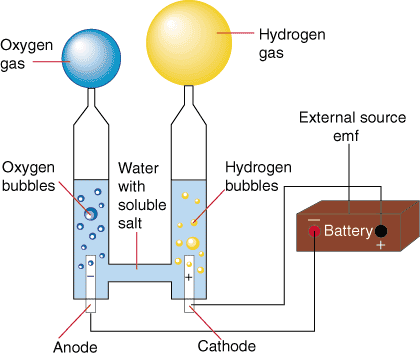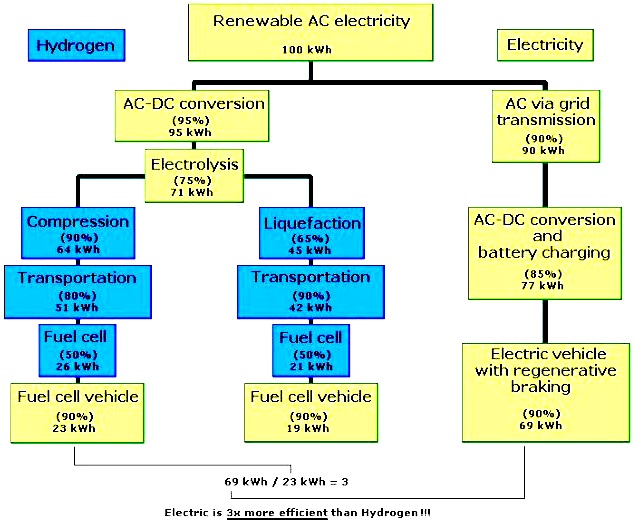|
OXYGEN
Please use our A-Z INDEX to navigate this site where page links may lead to other sites, or see HOME
|
|
ELECTROLYSIS - We can make oxygen by splitting water H2O into the two gases it is made of. We get twice as much hydrogen as oxygen gas during this process because of the chemical composition.
We take oxygen and water for granted. Without oxygen we'd not be able to breathe to oxygenate out blood to make our muscles work for us - and we could not think.
Oxygen is also vital for burning wood, coal and for internal combustion engines. Oxygen is the other gas in a hydrogen fuel cell, for the fabled Hydrogen economy.
Fortunately, plants, trees and phytoplankton produce oxygen for us to breathe, in that respiration process trees lock up carbon dioxide to build a useful material called wood.
Oxygen is a highly reactive nonmetal, and an oxidizing agent that readily forms oxides with most elements as well as with other compounds. By mass, oxygen is the third-most abundant element in the universe, after hydrogen and helium.
Oxygen is very useful stuff and we are lucky to live on a planet that has an envelope, or bubble surrounding it for us to enjoy. That was not always the case. It took millions of years to terra-form earth to make it the paradise it is, or was, before mankind came along to put a spanner in the works.
Oxygen can be compressed with piston compressors (pumps) and liquefied for storage when it is cooled sufficiently to turn from a gas into a liquid. That is rather convenient for sub-aqua divers and astronauts.
TREES
FOR HUMAN BREATHING
-
On average, one tree produces nearly 260 pounds of oxygen each year or 118 kilograms.
A human breathes about 9.5 tonnes of air in a year, about 23 percent of that is oxygen, by mass. We extract a little over a third of the oxygen from each breath. That works out to a total of about 740kg of oxygen per year. Which is, very roughly, six or seven trees’ worth.
LINKS & REFERENCES
https://www.sciencefocus.com/planet-earth/how-many-trees-does-it-take-to-produce-oxygen-for-one-person/ http://www.blue-growth.org
EUREKA - With the "green-energy" craze and talk of powering our future oil-free economy on hydrogen, it has received much attention in the last few decades. Learning about this potential fuel of the future is important and interesting, but not without snags, and these are for anyone to seek to overcome. In order for hydrogen fuel cells to work they need oxygen to combine with. Where is all that oxygen coming from? Our oceans supply half the oxygen we breathe, and provide food and livelihoods for more than a billion people. The other half comes from trees - the trees that are burning in forest fires and being chopped down to grow cash crops.
Please use our A-Z INDEX to navigate this site
|
|
|
This website is provided on a free basis as a public information service. copyright © Climate Change Trust 2019. Solar Studios, BN271RF, United Kingdom.
|




